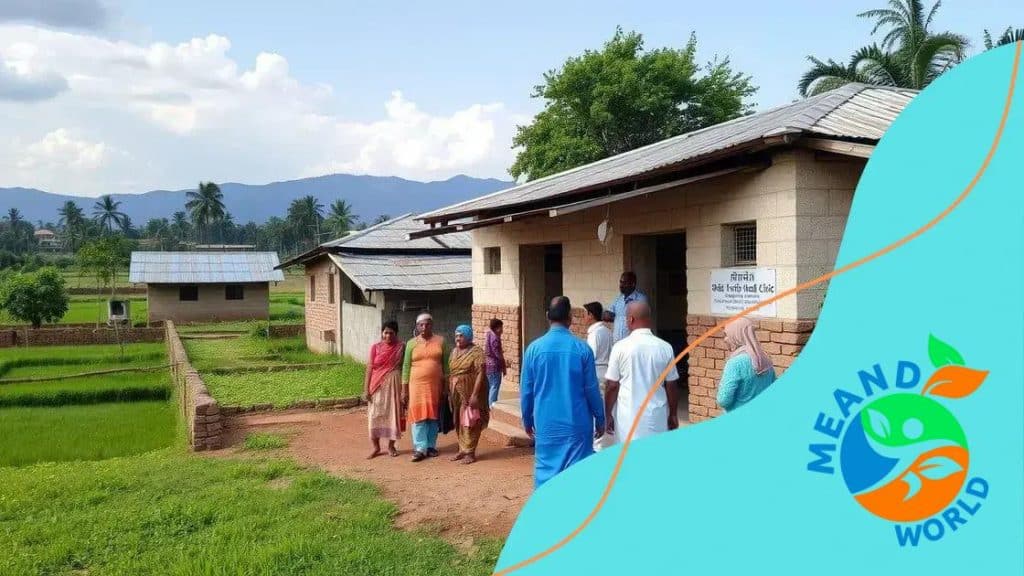Expanding access to healthcare for rural communities

Anúncios
Expanding access to healthcare for rural communities involves implementing telehealth, incentivizing providers, increasing funding, and fostering community collaboration to improve healthcare services and outcomes.
Expanding access to healthcare for rural communities remains a pressing issue that affects many lives. How do we ensure that everyone, regardless of location, can receive the medical attention they need? Let’s delve into valid solutions and real case studies that shed light on this critical subject.
Anúncios
Understand the challenges in rural healthcare access
Understanding the challenges in rural healthcare access is crucial for addressing the needs of these communities. Rural areas often face unique obstacles that can impact the delivery of care. These barriers may include geographical isolation, limited resources, and workforce shortages.
Anúncios
Geographical Isolation
Many rural communities are located far from urban centers, which can create significant delays in accessing healthcare services. Patients may have to travel long distances to see a doctor or receive treatment. This travel can be time-consuming and costly, especially for those without reliable transportation.
Limited Resources
Healthcare facilities in rural areas might not have the same resources as their urban counterparts. This limitation can affect the range of services offered, from basic care to specialized treatments.
- Fewer hospitals and clinics available
- Limited access to diagnostic equipment
- Shortage of medical supplies and medications
Workforce Shortages
Recruiting and retaining healthcare professionals in rural areas is another major challenge. Many doctors and nurses prefer to work in urban settings where they can have access to better facilities and professional development opportunities. This shortage leads to longer wait times and can affect the quality of care provided.
To tackle these challenges, various strategies need to be implemented. For example, telemedicine can bridge the gap, allowing patients to consult healthcare providers remotely. Additionally, encouraging medical professionals to work in rural areas through incentives can help improve the situation.
Explore innovative solutions for rural health services
Exploring innovative solutions for rural health services is essential for improving healthcare access. Creative approaches can help overcome barriers that rural communities face. One prominent solution is the adoption of telehealth services, which allow patients to connect with healthcare professionals remotely.
Telehealth Services
Through telehealth, patients can receive medical advice, follow-ups, and even some diagnoses without having to travel long distances. This method not only saves time but also reduces costs associated with travel.
- Increased access to specialists
- Convenient consultations from home
- Reduced waiting times for appointments
Mobile Health Clinics
Another innovative solution involves mobile health clinics. These units travel to underserved areas, providing crucial health services where they are needed most. By bringing care directly to rural populations, these clinics can help bridge the gap.
Health education is also a vital part of improving rural health services. Offering community workshops on nutrition, disease prevention, and wellness can empower individuals to take charge of their health. Improved awareness can lead to better outcomes.
Additionally, partnerships between local governments and private organizations can create new funding opportunities for rural health initiatives. These collaborations can expand services and make healthcare more accessible.
By implementing such innovative solutions, rural communities can enhance their access to healthcare and improve the quality of life for residents.
The role of technology in boosting rural healthcare

The role of technology in boosting rural healthcare is significant and transformative. As rural areas often struggle with access to medical services, innovative technologies can fill critical gaps. One major advancement is the rise of telemedicine, which allows patients to consult with healthcare providers from their homes.
Telemedicine Benefits
Telemedicine eliminates the need for long-distance travel, making healthcare more accessible for those in remote locations. Patients can receive diagnoses, treatment plans, and follow-up care via video calls or mobile apps.
- Convenience of home visits
- Immediate access to specialists
- Cost-effective healthcare options
Electronic Health Records
Another technological advancement is the implementation of electronic health records (EHR). These systems streamline patient information, making it easier for healthcare providers to share data. This leads to better coordination of care and improved patient outcomes. When doctors have access to accurate health records, they can make informed decisions quickly.
In addition to EHRs, mobile health applications are gaining popularity. These apps can help patients manage chronic conditions, schedule appointments, and even remind them to take medications. By empowering patients, technology encourages proactive engagement in their health.
Moreover, data analytics can significantly enhance rural health systems. Analyzing community health data helps identify trends and areas needing improvement. This enables healthcare providers and policymakers to develop targeted interventions.
Ultimately, embracing technology can lead to a more efficient and effective healthcare system in rural communities, ensuring that patients receive the care they need.
Highlight successful case studies in rural healthcare
Highlighting successful case studies in rural healthcare provides valuable insights into effective strategies and programs that have improved access to care. These examples can serve as models for other communities facing similar challenges. One notable case is the establishment of a community health center in a rural area.
Community Health Center Success
This center increased access to essential services, including primary care, dental, and mental health services. By integrating multiple healthcare services under one roof, patients experienced better coordination of care.
- Increased patient satisfaction and engagement
- Improved health outcomes for chronic conditions
- Lowered emergency room visits
Telehealth Implementation
Another successful case involved implementing telehealth in a semi-rural community. The local healthcare providers partnered with technology companies to offer remote consultations. This initiative notably reduced the barriers for patients who previously struggled to access specialized care.
After the telehealth program was launched, providers reported a significant increase in patient follow-ups, highlighting how technology bridges the gap in healthcare access.
Additionally, a rural farming community benefited from a wellness initiative focusing on preventive care. Through educational workshops and health screenings, residents became more aware of their health needs. This approach fostered a culture of wellness and reduced the occurrence of serious health issues.
These case studies underscore the importance of community involvement and innovative approaches. By sharing these successful models, other rural areas can adopt similar strategies to enhance their healthcare services.
Discuss policies to improve healthcare in rural areas
Discussing policies to improve healthcare in rural areas is essential for enhancing access to services and ensuring better health outcomes. Government initiatives play a crucial role in addressing the unique challenges faced by these communities.
Incentives for Healthcare Providers
One effective policy is offering incentives to healthcare professionals who choose to work in rural areas. This can include student loan forgiveness, housing allowances, and competitive salaries. Such measures can attract more doctors, nurses, and specialists to underserved regions.
- Loan repayment programs for medical graduates
- Grants for starting healthcare practices in rural areas
- Tax incentives for rural healthcare facilities
Funding for Rural Health Services
Increasing funding for rural health services is also vital. This funding can support the establishment of new clinics, upgrade existing facilities, and enhance technology integration. Grant programs can help ensure that rural healthcare providers have the necessary resources to operate effectively.
Additionally, policies that support telehealth services are important. By promoting telemedicine, rural residents can access care remotely, reducing travel barriers. Regulations should encourage insurers to cover telehealth visits on par with in-person visits.
Collaboration between local governments, healthcare organizations, and community leaders is crucial for effective policy implementation. Community input can help shape policies that reflect the needs and preferences of rural residents.
Overall, a combination of financial incentives, increased funding, and support for technology can lead to significant improvements in rural healthcare, making it more accessible and effective for those who need it most.
In conclusion, expanding access to healthcare for rural communities requires a multifaceted approach. By integrating innovative solutions, such as telehealth and mobile clinics, we can significantly improve healthcare access. Policies that incentivize healthcare professionals to serve in these areas and increase funding for rural health services are crucial for success. Highlighting successful case studies shows that with the right strategies, we can overcome existing challenges. Ultimately, collaboration among healthcare providers, policymakers, and the community will lead to a healthier future for rural populations.
FAQ – Frequently Asked Questions about Expanding Access to Healthcare for Rural Communities
What is telehealth and how does it benefit rural communities?
Telehealth is the delivery of healthcare services remotely using technology. It benefits rural communities by reducing travel needs and providing access to specialists.
How can financial incentives help improve rural healthcare?
Financial incentives can attract healthcare providers to rural areas by offering benefits such as loan forgiveness and housing allowances, addressing staffing shortages.
What role does community collaboration play in rural healthcare improvement?
Community collaboration involves local leaders and residents working together to identify health needs and implement effective solutions, ensuring that services are tailored to the community’s specific requirements.
What are some successful case studies in rural healthcare?
Successful case studies include health centers that integrate multiple services and telehealth programs that increase patient follow-ups, showcasing effective strategies for improving access and care.





